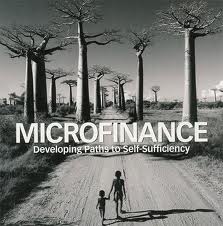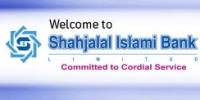Introduction: Microcredit programs have attracted much attention from researchers since their inception. These are small-scale credit programs that provide production credit and other services to rural poor. In recent years, many government and nongovernment organizations in low-income countries have introduced credit programs such as these, targeted to the poor. Many of these programs specifically target women based on the view that they are more likely to be credit-constrained than men, have restricted access to the wage labor market, and have inequitable share of power in household decision-making. It has also found that providing credit to women rather than men has a greater impact on different household choice variables, such as household expenditure, status of children’s schooling or health etc.
Even though overwhelming majority of participants are women (over 80 percent), there has not been any comprehensive study that investigates the determinants of economic performance of these women in these credit programs. These determinants can be in the form of different type of characteristics of women: their own characteristics (age, schooling etc) and the characteristics of the household or village they live in. Microcredit programs are specially issued by different non government organizations and banks such as Grameen Bank, Bangladesh Rural Advancement Committee (BRAC), and Bangladesh Rural Development Board’s (BRDB) Rural Development RD-12 program.
All these microcredit programs in Bangladesh work exclusively with the poor. Although sequence of delivery and the provision of inputs vary a little from program to program, all three programs essentially offer production credit to the landless rural poor (defined as those who own less than half an acre of land) formed into a group, using peer monitoring as a substitute for physical collateral. Loans give to individual group members, but the whole group becomes ineligible for further loans if any member defaults. The groups meet weekly to make repayments on their loans as well as mandatory contributions to savings and insurance funds. These microcredit programs also provide noncredit services in areas such as consciousness-raising, training for skill development, literacy, bank rules, investment strategies, health, schooling, civil responsibilities, and alteration of the attitude of and toward women.
A major goal of self-employment analysis is to highlight the role of credit programs in improving women’s participation. A large proportion of the credit provided by these programs goes to poor women, which aims to increase their employment and the productivity (Khandker and Khalily, 1994). The poor people need money for the survival and because of it; they become the part of the vicious circle of the poverty where at one time they approach to the moneylenders and the other times to formal financial institutions.
Microfinance is a path in which poor people can mobilize their savings. It is a great approach for our country for the poverty alleviation. Especially for women empowerment, they can link their savings with the credit and finally become self –employed.
Purpose of the study
Now a day’s Poverty alleviation programs are the most concentration programs. Microfinance has proven to be an effective and powerful tool for poverty reduction. Like many other development tools, it works effectively for the poorer strata of society.
The fundamental purpose of the study is to point out the role of microcredit for the poverty alleviation Program. Because microcredit programs give a better, chance to alleviate poverty in Bangladesh. In addition, it gives a good source of income for the rural women. Therefore, we will go through on different issues, such as-
- How microcredit programs works in Bangladesh
- How it can be used as a poverty alleviation program
- How women are helped by the microcredit programs
Significance of the study
The study is designated to indicate the importance of microcredit to countries overall economics. It tries to provide information regarding how microcredit helps us to alleviate poverty. It also shows how microcredit can be a beneficial form for the poor women in our rural areas. This study develop awareness about the current problems that the microcredit sectors are facing and what is recommend also pointed out in this report. Some graphical representation will also help to general reader to understand the report and gather knowledge from it.
Objective of the report
The overall objective of the paper is to show a status of microcredit sector of Bangladesh. The central objectives of the study were-
- To identify the most possible available use of microfinance
- To identify the process how microcredit sector help to shape the countries industrialization process.
- To identify the opportunities in microcredit sector especially for the rural women.
- To identify the problems and their possible solution in microcredit sector
- To find out the present and future role of the government and NGO’S regarding microcredit sector.
Literature review
Throughout the world, poor people are excluded from formal financial systems.
Exclusion ranges from partial exclusion in developed countries to full or nearly full exclusion in lesser-developed countries (LDCs). Absent access to formal financial services, the poor have developed a wide variety of informal, community-based financial arrangements to meet their financial needs. In addition, over the last two decades, an increasing number of formal sector organizations (non-government, government, and private) have been created for the purpose of meeting those same needs. Microfinance is the term that has come to refer generally to such informal and formal arrangements offering financial services to the poor. Microfinance has existed, although mostly in the shadows and unseen by casual observers, since the rise of formal financial systems, and indeed probably predates them. It has only been within the last four decades, however, that serious global efforts have been made to formalize financial service provision to the poor. This process began in earnest around the early to mid-1980s and has since gathered an impressive momentum. Today there are thousands of
MFIs providing financial services to an estimated 100 – 200 million of the world’s poor (Christen et al., (1995)). What began as a grass-roots “movement” motivated largely by a development paradigm is evolving into a global industry informed increasingly by a commercial/finance paradigm. The rise of the microfinance industry represents a remarkable accomplishment taken within historical context. It has overturned established ideas of the poor as consumers. A common type of informal financial arrangement found throughout the world is the Rotating Credit and Savings Association (ROSCA). A ROSCA consists of a group of community members who meet regularly to pool their savings. The pool is then lent out to one member of the group, who repays it, at which time it is lent out to another group member, and so on until each group member takes a turn borrowing and repaying the pool of savings. Financial services, shattered stereotypes of the poor as not bankable, spawned a variety of lending
methodologies demonstrating that it is possible to provide cost-effective financial services to the poor, and mobilized millions of dollars of “social investment” for the poor (Mutua, et al. (1996)). It must be emphasized too that the animating motivation behind the microfinance movement was poverty alleviation. Not only that, but microfinance offered the potential to alleviate poverty while paying for itself and perhaps even turning a profit—“doing well by doing good.” This potential, perhaps more than anything, accounts for the emergence of microfinance onto the global stage. Scholarly interest in microfinance has lagged behind industry development, but it too is now growing rapidly. Before 1997, academic journals published only an occasional article on microfinance, but since that time, academic journals have published hundreds of peer-reviewed
articles on the topic. Nonetheless, microfinance has yet to break into finance journals. This despite the term finance in microfinance and the fact that the basic products offered by microfinance institutions (MFIs)—namely investing (savings), lending (credit services), and insurance (risk management)—are all well-established topics of mainstream finance research. The purpose of this paper, therefore, is to introduce microfinance to the academic finance community and to provide an outline for future research. There exists a large body of non-critically-reviewed microfinance literature. The quality of this literature runs the gamut, although it does include a significant number of high quality and highly informative essays and studies.
Microfinance has been extensively examined over the past 10 to 15 years, and the resulting literature is now very large. A focused review of the literature was conducted to evaluate recent publications regarding the impact of microfinance on poverty reduction.
The number of rigorous studies of client outreach and impact has grown considerably,
especially in the past few years, spurred in part by the development of monitoring tools like CGAP’s Poverty Assessment Tool, Cashpor Housing index, SEF’s Participatory Wealth Ranking, and USAID’s AIMS Tools. The resulting studies show that:
· The tools are relatively inexpensive and practical to use, and they yield useful data for
both programs and donors.
· Average loan size is an easy indicator to collect but proves to be unreliable when
measuring depth of outreach. Minimal extra effort in data collection can yield much
richer information for marketing and evaluation.
· Microfinance institutions (MFIs) show considerable diversity in their ability to reach poor populations.
· Excellent financial performance does not imply excellence in outreach to poor
households.
· At the same time, reaching the poor is not at odds with maintaining excellent financial
performance and professional business practices.
· Programs that make poverty reduction an explicit goal and make it a part of their
organizational culture are far more effective at reaching poor households than those that value finance above all else.
· These lessons point to natural evolutions in the microfinance sector. Many MFIs have
tended to focus foremost on their own financial survival, and have generally been
reluctant to invest substantially in evaluations (World Bank 1998). Currently, the majority
of MFIs neither determines the composition of their clientele upon intake nor evaluates
the effectiveness of their program in terms of poverty reduction. The development and
use of the new tools for market analysis and evaluation suggests that failure to monitor
and evaluate can cut costs in the short-run at the expense of achieving long-term social
and economic goals.
The review of the literature also points to several specific conclusions about the impact of microfinance on poverty reduction:
· Evidence shows the positive impact of microfinance on poverty reduction · While the quality of many studies could be improved, there is an overwhelming amount of evidence substantiating a beneficial affect on: zero Increases in income (Wright 2000; UNICEF 1997; Khandker 2001, 1998) zero Reductions in vulnerability (Wright 2000, Zaman 2000; McCulloch and Baulch 2000)
· There are fewer studies with evidence on health, nutritional status and primary schooling attendance, but the existing evidence is largely conclusive and positive (Wright 2000
Reaching the poorest
Despite disagreement on specific definitions of levels of poverty, there is a consensus
that:
· Microfinance is not for everyone. Most importantly, entrepreneurial skills and ability are necessary to run a successful microenterprise and not all potential customers are equally able to take on debt. While these points will be true across all strata of poverty, it is assumed that they will have a greater effect on the very poorest. · The sick, mentally ill, destitute etc. who form a minority of those living below the poverty line are typically not good candidates for microfinance. Most researchers agree that this
group of people would be better candidates for direct basic assistance.4 · More optimistically, microfinance can be effective for a broad group of clients, including those who are living in the bottom half of those below a country’s poverty line (to use a categorization proposed by CGAP). We will call this strata the “poorest” and note that
they constitute the group that generally intersects the various definitions of extreme poverty: landlessness, limited access to basic social services, average per capita income of less than $1 a day, and bottom third of a relative poverty ranking.
· Specifically, various studies show: o There is no evidence of an inverse relationship between a client’s level of poverty
and their entrepreneurial ability (Garson). o Borrowing patterns and the inclination to save have been found to be similar
across clients at different levels of poverty (Zaman 2000) o Financial performance of MFIs targeted to the poorest clients can be comparable to those of MFIs that do not reach the poorest (Khandker 1998; Gibbons and
Meehan 2000; Churchill 2000) · There is little evidence that clients with existing microenterprises or employment (often defined as “the economically active”) are the only ones that can benefit from microfinance (Robinson 2001; Hulme and Mosley 1997; Zaman 2000), and the little evidence that exists here is subject to debate about methodology.
Targeting
While it has been demonstrated in a number of studies that the poorest can improve their socioeconomic
conditions, researchers have pointed to several general issues that make
microfinance work for the poorest:
· Even a well-designed microfinance programme is unlikely to have a positive impact on the poorest unless it specifically seeks to reach them through appropriate product design and targeting (Wright 2000). Experience shows that unless there is a targeting tool, the poorest will either be missed or they will tend to exclude themselves because they do not see the programs as being for them, do not have the “correct” clothes, etc. (Navajas et al 2000; Simanowitz, FFH)
· Mission creep: There is a strong tendency to move to the top of the clientele group, and to give little attention to the needs of the poorest, with the end result that their proportion diminishes over time (Navajas et al 2000). Only MFIs that design programs around the needs of the poorest are likely to retain them as clients.
Savings vs. Credit
There is general consensus that facilitating savings is important, because there is a high demand for it among the poorest and because savings play a role in protecting against the seasonality of cash-flows and fulfilling an insurance function. In addition, building up deposits reinforces financial discipline for customers and can eventually yield collateral and serve as a
source of funding for MFIs. · Savings alone, however, have only a minor developmental impact: the protection against shocks might allow children to remain in school or income-earners to get medical treatment and minimize time away from work, but it is slow to create any significant wealth in itself unless credit is also available. · MFIs that focus on savings more than credit tend to reach a smaller proportion of the poorest, have a lower and slower impact on poverty reduction, and are therefore less conducive to reaching the Millennium Goals by the target dates. While the savings-first institutions are easier to finance by donor agencies (far less start-up capital required), the few comparative studies available show that borrowers fare better than nonborrowers (Chen and Snodgrass 1999; Fruman 1998).
Synergies between microfinance and other programs
It is clear from the evidence that there are strong potential synergies between microfinance and the provision of basic social services for clients. The benefits derived from microfinance, basic education, and primary health are interconnected, and programs have found that the impact of each can increase when they are delivered together.Overview4 · The marginal cost of providing education or basic health information can be substantially reduced when the infrastructure for microfinance is already in place · Services provided need to be relevant to the needs of the target group and not just an add-on that is of poor quality (UNICEF 1997; MkNelly and Dunford 1999, 1998; Marcus 1999) Very few studies directly compare alternative interventions. Most researchers conclude that it is difficult to isolate the impact of a specific development tool as each contributes to the others.
While the question of which development tool gives the “biggest bang for the buck” is legitimate in principle, in practice it is difficult to compare the benefits achieved by different interventions.
With this in mind, it should be noted that: · Microfinance has the potential to have an immediate impact on a wide range of poverty reduction targets: income, health, nutrition, and education. · Basic health is likely the most crucial intervention, but should be combined with microfinance in order to strengthen the impact on the #1 Millennium Goal of reducing those living on less than $1/day. · Expanding primary education for children has a wide-ranging impact on the poverty reduction targets (income, health, nutrition, fertility) but any benefits will be delayed, (thus reducing its effectiveness for reaching the targets by 2015).
Cost-effectiveness and financial sustainability
Microfinance compares favourably to other interventions particularly with regard to costeffectiveness and prospects for sustainability:
· Cost-effectiveness: An advantage of microfinance is that donor investment is recycled and reused (Wright 2000). Direct comparisons done by Khandker (1998) show that microfinance can be a more cost-effective developmental tool than alternatives including formal rural financial intermediation, targeted food interventions, and rural infrastructure development projects. More over, unlike many other interventions, costs for microfinance tend to diminish with the scale of outreach (Rhyne 1997; Christen et al 1996) · Sustainability: Few, if any, other development tools have the potential to become sustainable such that, after initial start-up grants, new inputs are not required for every future client. o There need not be a trade-off between reaching the poorest and attaining financial sustainability. Although there are no rigorous econometric models to substantiate it, there is ample evidence that MFIs targeting the poorest can fare as well financially as those that don’t (Gibbons and Meehan 2000; Churchill 2000) o There is also ample anecdotal evidence that MFIs that target poorer clients can achieve substantially higher repayment rates than those that target richer clients (Pro Mujer vs. BancoSol; Grameen/BRAC vs. traditional banking system in Bangladesh) o It should be noted that emphasizing financial sustainability above all else can have the practical effect of excluding the poorest because of the widespread misperception that the poorest are a greater credit risk and the reality that the unit costs of small loans tend to exceed the unit costs of larger loans.
Methodology
The review is primarily based on secondary and published information. The major sources of information are published research reports and papers, unpublished reports from reputable organizations, data from major institutions such as PKSF, InM, Microcredit Regulatory Authority (MRA), Grameen Bank, BRAC, ASA, some
smaller but growing microfinance institutions, network agencies such as Credit and Development Forum (CDF), several international non-governmental organizations (NGOs) operating in the country, commercial banks, Bangladesh Bank (Central Bank) etc. Limited number of interviews has been conducted to develop a picture of
the trends as well as challenges faced by the sector. Some anecdotal evidence and case studies are also included.
Data Limitation
A major challenge faced during producing such a report was absence of comparable and up to date data sets.
Credit and Development Forum (CDF) used to publish a consolidated report on the sector but the latest published report presents data of 2006. Microfinance institutions also do not follow same reporting dates: some follow financial year and others calendar year. Definitions also vary, e.g. microenterprise loan of one MFI may be considered ‘mainstream’ microcredit in another MFI. Lack of availability of programmatic as well as financial information for individual financial product is a big challenge for analyzing viability of individual product. For example, hardcore poor and marginal/small farmers are merged with mainstream client groups in some MFIs whereas these are separate programs for others. Segregation of income and expenditure data according to product
is rare. Therefore, data have been updated and segregated wherever practicable and estimated in other cases. Information about outreach, institutions, and or programs presented in this report should not be treated as exhaustive.
Positive Economic Trends of 1990s-2006
Overall: This discussion is to reflect on the overall performance of Bangladesh economy, which is also a period
of expansion of microfinance sector in Bangladesh. The progress of Bangladesh has been mixed during the 1990-
2006 years under democratic governments. There have been considerable positive changes in many social
indicators, even in comparison to the country’s better known neighbors. However, there have been
disappointments on many fronts, with a failure to capitalize fully on all the opportunities in the social and
economic arenas in order to achieve faster economic growth. Nonetheless in the economic arena Bangladesh did
well even in an environment of confrontational politics. The estimated per capita GDP in FY 2006 was USD 514.
The average GDP growth for 2002-2006 (4 years) was 6%, and year ending June 2006 had the best performance
for the last 15 years. The major contributors were export growth in manufacturing, higher remittance growth from
Bangladeshi workers, and growth in both agriculture and services. In FY 2006, growth in the industrial sector,
agriculture and services was 9.6%, 4.5% and 6.5% respectively, the sectoral composition of GDP being: industry
(29%), agriculture (22%) and services (49%). The classic long-term shift has been taking place with the move
away from agriculture towards manufacturing and processing, and to services.
The domestic savings-GDP ratio rose from 20.0% in FY 2005 to 20.3% in FY 2006 and investment-GDP ratio
rose form 24.5% in FY 2005 to 25% in FY 2006. Bangladesh has been able to attract important foreign
investments but the future flow depends on political stability. The Government in 2006 was looking to a sustained
7% overall GDP growth rate from 2008 and onwards but as discussed above, that did not materialize.
Bangladesh exports experienced a 22% overall growth in FY 2005-06 reaching over USD 10 billion. The
doomsday scenario of collapse in the garments sector due to the end of Multi Fibre Agreement (MFA) in 2005
was proven wrong. Export surged both in sewing (13.5%) and knitting segments (35.5%). Bangladeshi
entrepreneurs and workforce had proven their resilience, acumen and efficiency. Remittances from Bangladeshi
economic migrants through formal channels reached USD 4.8 billion in FY 2005-06, a 25% growth over the
previous period; it was also estimated that a similar amount came in through informal channels.
Inflation: Bangladesh enjoyed a low inflation rate below 3% between 1990-91 to 2001-02 but the rate grew to
6.5% in 2004-05 and reached 7.2% in October 2006. This was due to internal demand, depreciation of Taka (8.5%
in FY 2006) and increase in commodity prices in the world market, especially of oil. Being a fully oil importing
country Bangladesh was hit hard; this led to an increase in transportation costs and agricultural inputs, especially
diesel for irrigation. The government has responded by restrained monetary policy, tightening credit supply and
an increase in interest rate.
Poverty declined: We mentioned above that the poverty is expected to rise by reversing a trend of 1990-2006. The
Household Income and Expenditure Surveys (HIES) conducted in 1995/96, 2000 and 2005 using cost-of-basicneeds
(CBN) method showed that poverty has been reduced across rural and urban areas: in 2005 about 40% of
people lived below upper poverty line compared to 48.9% in 2000; and in 2005 about 25.5% lived below lower
poverty line compared to 33.7% in 2000 (see Table 1.4). In CBN method two poverty lines are estimated: i)
Lower poverty line and ii) Upper poverty line. There are two ways of defining these two poverty lines; food and
non-food poverty lines. The food poverty line is determined by a) selecting a food basket of 11 items to meet the
daily nutritional requirements of 2122 Kcal, and b) estimating the cost of acquiring the basket. A non-food
poverty line is calculated by estimating the cost of consuming non-food goods by the households close to food
poverty line. The lower poverty line represents extremely poor households whose total expenditures are equal to
14 | State of Microfinance in Bangladesh
the food poverty line. The upper poverty line represents moderately poor households whose food expenditure is at
the level of food poverty line.
Despite population growth (total est. 137 million in 2005) Bangladesh has experienced real growth and reduced
poverty. For example, poverty shrank by 9% between 1991-92 and 2000, at the rate of 1% pa, and by 8.9%
between 2000 and 2005, at the rate of 1.8% pa, and this reduction even touched the poorest of the poor. Extreme
poverty has declined based on a headcount index using direct calorie intake method and nutritional indicators
have improved. Both urban and rural poverty has declined though a huge disparity between rural and urban
extreme poverty continues to exist (43.4% versus 28.4%) (see Table 1.5). Further, because of the population
growth, the absolute number of poor has remained very high [World Bank 2002].
















